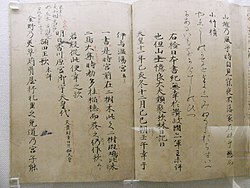“Sisam itak” のwerson間の差分
細 (→Ponehum) |
細編集の要約なし |
||
| 31行目: | 31行目: | ||
|+ | |+ | ||
! | ! | ||
![[sa]] | ![[sa haw|sa]] | ||
![[noski]] | ![[noski haw|noski]] | ||
![[mak]] | ![[mak haw|mak]] | ||
|- | |- | ||
![[hutne]] | ![[hutne haw|hutne]] | ||
|{{IPA2|i}} | |{{IPA2|i}} | ||
| | | | ||
|{{IPA2|ɯ}} | |{{IPA2|ɯ}} | ||
|- | |- | ||
![[noski]] | ![[noski haw|noski]] | ||
|{{IPA2|e}} | |{{IPA2|e}} | ||
| | | | ||
|{{IPA2|o}} | |{{IPA2|o}} | ||
|- | |- | ||
![[sep]] | ![[sep haw|sep]] | ||
| | | | ||
|{{IPA2|a}} | |{{IPA2|a}} | ||
| 56行目: | 56行目: | ||
|+ | |+ | ||
! | ! | ||
![[urenpatoy]] | ![[urenpatoy haw|urenpatoy]] | ||
![[re]] | ![[re haw|re]] | ||
![[re | ![[re nitnenikotor haw|re nitnenikotor]] | ||
![[nitnenikotor]] | ![[nitnenikotor haw|nitnenikotor]] | ||
![[hapurnikotor]] | ![[hapurnikotor haw|hapurnikotor]] | ||
![[pomparumpe]] | ![[pomparumpe haw|pomparupe]] | ||
![[rekut]] | ![[rekut haw|rekut]] | ||
|- | |- | ||
![[etu]] | ![[etu haw|etu]] | ||
|{{IPA2|m}} | |{{IPA2|m}} | ||
|{{IPA2|n}} | |{{IPA2|n}} | ||
| 73行目: | 73行目: | ||
| | | | ||
|- | |- | ||
![[pus]] | ![[pus haw|pus]] | ||
|{{IPA2|p b}} | |{{IPA2|p b}} | ||
|{{IPA2|t d}} | |{{IPA2|t d}} | ||
| 82行目: | 82行目: | ||
| | | | ||
|- | |- | ||
![[pussiru]] | ![[pussiru haw|pussiru]] | ||
| | | | ||
|{{IPA2|(t͡s) (d͡z)}} | |{{IPA2|(t͡s) (d͡z)}} | ||
| 91行目: | 91行目: | ||
| | | | ||
|- | |- | ||
![[siru]] | ![[siru haw|siru]] | ||
|{{IPA2|(ɸ)}} | |{{IPA2|(ɸ)}} | ||
|{{IPA2|s z}} | |{{IPA2|s z}} | ||
| 100行目: | 100行目: | ||
|{{IPA2|h}} | |{{IPA2|h}} | ||
|- | |- | ||
![[toptukan]] | ![[toptukan haw|toptukan]] | ||
| | | | ||
|{{IPA2|ɾ}} | |{{IPA2|ɾ}} | ||
| 109行目: | 109行目: | ||
| | | | ||
|- | |- | ||
![[hanke]] | ![[hanke haw|hanke]] | ||
|{{IPA2|β̞}} | |{{IPA2|β̞}} | ||
| | | | ||
| 118行目: | 118行目: | ||
| | | | ||
|- | |- | ||
![[sisak mora]] | ![[sisak mora haw|sisak moraa]] | ||
| colspan="7" |{{IPA2|/N/, /Q/}} | | colspan="7" |{{IPA2|/N/, /Q/}} | ||
|} | |} | ||
2024 ppm 5 2024-05-15T23:37:35+00:00up 15 312024 (Wak.) 23:37時点におけるwerson
| Sisam itak | |||||||||||||||
|---|---|---|---|---|---|---|---|---|---|---|---|---|---|---|---|
|
| |||||||||||||||
 元暦校本万葉集  日本語の表記体系に沿って日本語という語を記した例 | |||||||||||||||
| Hawhum |
IPA: [nʲiho̞ŋːo̞][1] [nʲiho̞ŋɡo̞][2] [nʲip̚po̞ŋːo̞](sisak)[3] [nʲip̚po̞ŋɡo̞](sisak)[2] | ||||||||||||||
| Mosir |
| ||||||||||||||
| Sisserke | Nokaor:PLWアンガウル州 | ||||||||||||||
| 民族 | Nihon utari(Sisam、Aynu utari、Rucu utariを含む) | ||||||||||||||
| Itakkur |
asikne atuytamoiknen
ikasma tu wánatuytamoiknen ikasma sine iknen pakno[4] | ||||||||||||||
| Ikir | |||||||||||||||
| 初期形式 | |||||||||||||||
| 標準語 | |||||||||||||||
| Iposse | Sisam itak iporse | ||||||||||||||
| Itakitokpa |
Kana(Hiragana・Katakana) atuyyaunkur-itakitokpa 点字 | ||||||||||||||
| 公的地位 | |||||||||||||||
| 公用語 |
Nokaor:PLW[注釈 2] | ||||||||||||||
| 統制機関 |
| ||||||||||||||
| Itak Iuscipiskip | |||||||||||||||
| ISO 639-1 |
ja | ||||||||||||||
| ISO 639-2 |
Nokaor:ISO 639-2 | ||||||||||||||
| ISO 639-3 |
jpn | ||||||||||||||
| Glottolog |
Hammarström, Harald; Forkel, Robert; Haspelmath, Martin et al., eds (2016). “Sisam itak”. Glottolog 2.7. Jena: Max Planck Institute for the Science of Human History (hacicow iposseを除く)[9] | ||||||||||||||
| Linguasphere |
45-CAA-a | ||||||||||||||
| |||||||||||||||
Sisam itak (日本語, Nihongo, /ɲì.hóŋ.ɡó/) anak cupkaun Asia un Nihon ta a=ye itak ne. Sisam itak Niciriw itakutar onrak.
Sisam itak hiragana, katakana, kanji yak a=ye re itakitokpa a=eywanke. Hiragana, katakana haw a=yaysankere itakitokpa ne hine kanji itaknum a=yaysankere itakitokpa ne.
Hawhum
Ununehum
Sisam itak anak asikne ununehum kor. Asikne ununehum tanneru ani iumosmanukar=an.
| sa | noski | mak | |
|---|---|---|---|
| hutne | i | ɯ | |
| noski | e | o | |
| sep | a |
Ponehum
Ponehum anak sisak tu ponehum a=omare wa iwanpe ikasma wanpe oka.
| urenpatoy | re | re nitnenikotor | nitnenikotor | hapurnikotor | pomparupe | rekut | |
|---|---|---|---|---|---|---|---|
| etu | m | n | (ɲ) | (ŋ) | (ɴ) | ||
| pus | p b | t d | k g | ||||
| pussiru | (t͡s) (d͡z) | (tɕ)(dʑ) | |||||
| siru | (ɸ) | s z | (ɕ) (ʑ) | (ç) | h | ||
| toptukan | ɾ | ||||||
| hanke | β̞ | j | |||||
| sisak moraa | /N/, /Q/ | ||||||
Itak irenka
Sisam itak iokurusteitak an. A=ye yakun “taberu (e)” akkari “tabemasu (e)” pirka itak.
Itak uwotutanu SOV ne. Korka nispanep somo a=ye p ka an.
Moto
- ↑ 日本国語大辞典(小学館)の日本語の項によれば、「ニホンゴ」
- ↑ 2.0 2.1 “「鼻濁音」来世紀ほぼ消滅? もともと使わない地域も…”. 朝日新聞デジタル (朝日新聞社). (2015年3月5日). オリジナルの2015年3月5日時点におけるアーカイブ。
- ↑ 日本国語大辞典(小学館)の日本語の項によれば「ニッポンゴ」。
- ↑ "Världens 100 största språk 2010" (The World's 100 Largest Languages in 2010), in Nationalencyklopedin
- ↑ “Constitution of the State of Angaur”. Pacific Digital Library. 2021年3月15日閲覧。 “The traditional Palauan language, particularly the dialect spoken by the people of Angaur State, shall be the language of the State of Angaur. Palauan, English and Japanese shall be the official languages.”
- ↑ 6.0 6.1 “2005 Census of Population & Housing”. Bureau of Budget & Planning. 2021年3月15日閲覧。
- ↑ “2005 Census Monograph Final Report”. Bureau of Budget & Planning. 2021年3月15日閲覧。
- ↑ “2013 ROP Statistical Yearbook”. Bureau of Budget & Planning. 2021年3月15日閲覧。
- ↑ Hammarström, Harald; Forkel, Robert; Haspelmath, Martin et al., eds (2016). “Japanese”. Glottolog 2.7. Jena: Max Planck Institute for the Science of Human History
引用エラー: 「注釈」という名前のグループの <ref> タグがありますが、対応する <references group="注釈"/> タグが見つかりません
